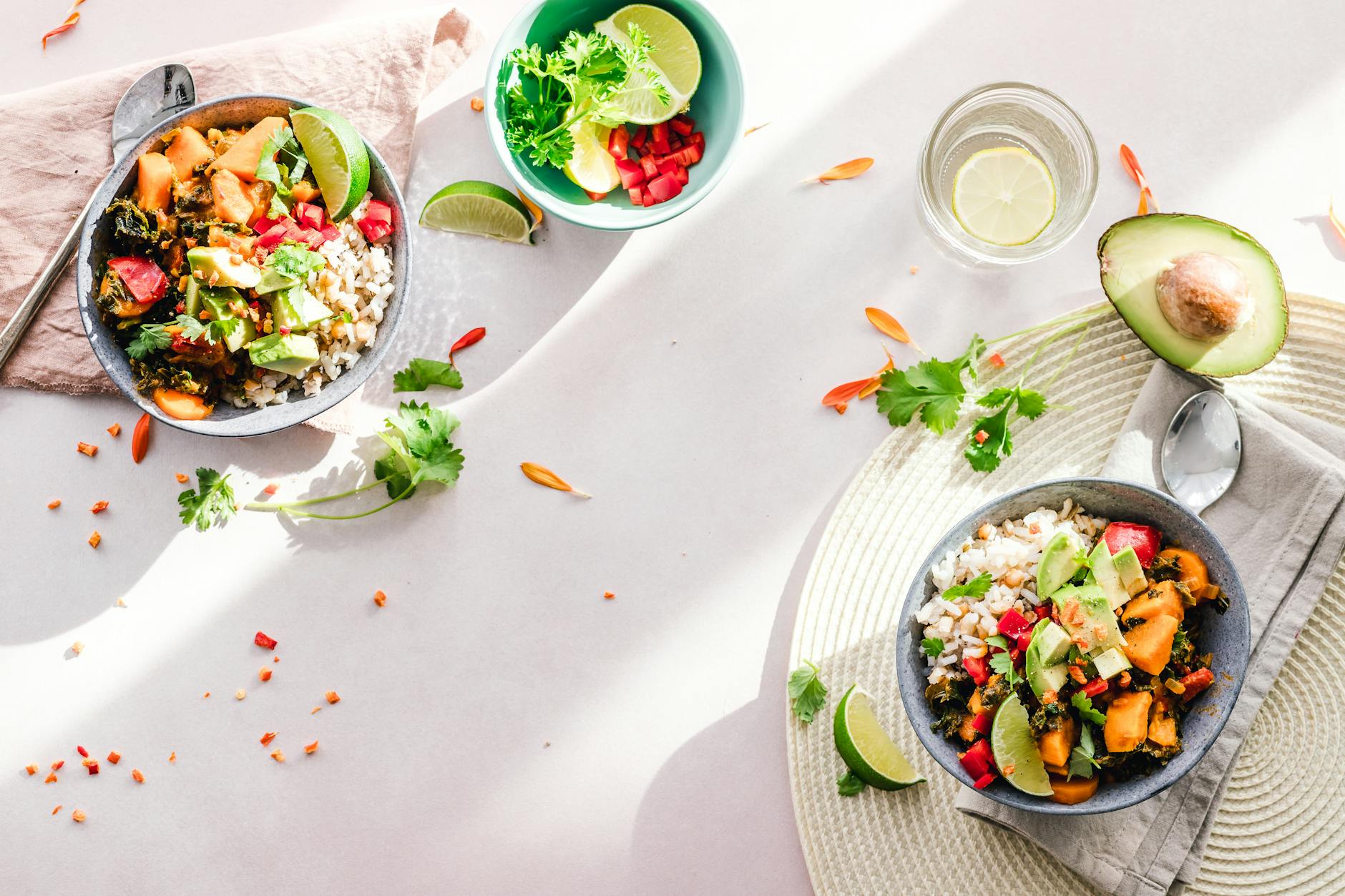Discover the ultimate guide to conquering the keto diet with our top tips and tricks for beginners. Don’t miss out!
Table of Contents
- Introduction to the Keto Diet
- Getting Started on the Keto Diet
- Creating a Keto Diet Plan
- Delicious Keto Recipes
- Tailoring the Keto Diet for Women Over 50
- Diverse Diets and How They Fit Into a Keto Lifestyle
- Troubleshooting Common Challenges on the Keto Diet
- Benefits of the Keto Diet Beyond Weight Loss
- Sustainability of the Keto Diet Long-Term
- Conclusion: Embracing the Keto Lifestyle
Welcome to the world of the keto diet, where fat is your friend and carbs are the enemy. If you’re a beginner looking to dive into the world of ketosis and all its benefits, you’re in the right place. In this guide, we’ll break down everything you need to know to kickstart your keto journey with confidence.
Introduction to the Keto Diet
Let’s start with the basics. The keto diet is a low-carb, high-fat eating plan that focuses on putting your body in a state of ketosis. This means your body burns fat for fuel instead of carbs, leading to weight loss and other health benefits. By drastically reducing your carb intake and increasing your fat consumption, you can train your body to become a fat-burning machine.
Getting Started on the Keto Diet
Calculating your macros is a crucial first step on the keto diet. Your macros refer to the percentage of calories you should consume from fat, protein, and carbs. Aim for 70-75% of calories from fat, 20-25% from protein, and 5-10% from carbs. There are online calculators to help you determine your personalized macro goals based on your age, weight, and activity level.
As a beginner, it’s important to ease into ketosis gradually. Start by reducing your carb intake slowly over a few days to prevent keto flu symptoms such as headaches, fatigue, and irritability. Also, be mindful of hidden carbs in foods like sauces, condiments, and processed snacks. Reading labels and tracking your food intake can help you stay on track.
Creating a Keto Diet Plan
A sample keto meal plan can help you get started on the right foot. A typical day on the keto diet might include eggs and avocado for breakfast, a salad with grilled chicken for lunch, and salmon with roasted vegetables for dinner. For snacks, opt for nuts, cheese, or olives.
Meal prepping is another key strategy for success on the keto diet. Preparing meals and snacks in advance can prevent you from reaching for carb-laden convenience foods when hunger strikes. Invest in meal prep containers, plan your meals for the week, and batch cook proteins and veggies to save time and stay organized.
Delicious Keto Recipes
Keto-friendly recipes don’t have to be bland or boring. There are countless delicious options to choose from that will make you forget you’re even on a diet. From keto bread to snacks and hearty meals, the possibilities are endless. Some popular choices include cauliflower rice, zucchini noodles, and fat bombs made with coconut oil and nuts.
When it comes to supplements, consider adding keto max science products to your routine. These supplements can support your body’s transition into ketosis and provide added energy and mental clarity. Always consult with a healthcare professional before starting any new supplement regimen.
Tailoring the Keto Diet for Women Over 50
For women over 50, adjusting your keto meal plan to meet your specific nutritional needs is essential. Focus on nutrient-dense foods that provide plenty of vitamins and minerals, such as leafy greens, avocados, and fatty fish. Pay attention to your hydration and electrolyte levels, as aging can impact your body’s ability to retain water.
The keto diet can be especially beneficial for women going through menopause, as it may help alleviate symptoms like hot flashes and mood swings. Incorporating foods rich in phytoestrogens, such as flaxseeds and soy products, can also support hormonal balance during this stage of life.
Diverse Diets and How They Fit Into a Keto Lifestyle
While the keto diet is known for its strict guidelines, there’s room for diversity within a keto lifestyle. Experiment with different cuisines, flavors, and cooking techniques to keep things exciting. Incorporating a variety of foods into your keto meal plan ensures you’re getting a wide range of nutrients and staying motivated on your journey.
| Tip | Trick |
|---|---|
| Plan your meals ahead of time | Preparation is key to success on the keto diet. Take some time to plan your meals for the week so you always have keto-friendly options available. |
| Stock up on keto-friendly foods | Make sure your pantry and fridge are stocked with low-carb, high-fat foods like avocados, nuts, and healthy oils to make sticking to the diet easier. |
| Stay hydrated | Drinking plenty of water is important on the keto diet, especially as your body adjusts to burning fat for fuel. Aim to drink at least 8 glasses of water a day. |
| Monitor your macros | Keeping track of your macronutrient intake (fat, protein, and carbs) can help you stay on track and make sure you’re getting the right balance of nutrients. |
| Listen to your body | Pay attention to how your body reacts to the keto diet and make adjustments as needed. Everyone’s body is different, so what works for one person may not work for another. |
Remember, balance is key when following any diet, including keto. Don’t be afraid to mix things up and try new recipes to keep your taste buds happy. Embracing diverse diets can help you stay on track and make the keto lifestyle more sustainable in the long run.
Troubleshooting Common Challenges on the Keto Diet
Cravings and hunger pangs can be a common struggle on the keto diet, especially in the beginning. Combat these feelings by staying hydrated, choosing high-fat snacks, and getting plenty of fiber from low-carb vegetables. If cravings persist, try incorporating more protein into your meals to help keep you satisfied.
Plateaus and stalls in weight loss can also occur on the keto diet. If you hit a plateau, reassess your portion sizes, track your food intake more closely, and consider incorporating intermittent fasting to shake up your metabolism. Remember, weight loss is not always linear, so be patient and trust the process.
Benefits of the Keto Diet Beyond Weight Loss
While weight loss is often the primary goal of those starting the keto diet, the benefits extend far beyond shedding pounds. Many individuals report increased energy levels, improved mental clarity, and better focus when following a keto lifestyle. By stabilizing blood sugar levels and reducing inflammation, the keto diet can have a positive impact on overall health and well-being.
For individuals with certain health conditions like diabetes or PCOS, the keto diet can be a game-changer. By controlling blood sugar levels and reducing insulin resistance, the keto diet may help manage symptoms and improve quality of life for those living with these conditions.
Sustainability of the Keto Diet Long-Term
Transitioning to a keto lifestyle doesn’t have to be a short-term fix. With the right tools and strategies, you can make the keto diet a sustainable way of eating for the long haul. To prevent burnout or feelings of deprivation, it’s important to incorporate variety into your meals, experiment with new ingredients, and listen to your body’s hunger cues.
When it’s time to reintroduce carbs into your diet, do so gradually and mindfully. Pay attention to how your body responds to different foods and adjust your intake accordingly. By finding a balance that works for you, you can enjoy the benefits of the keto diet while still savoring your favorite carb-filled treats in moderation.
Conclusion: Embracing the Keto Lifestyle
Congratulations on taking the first step towards a healthier, more energized you. The keto diet may seem daunting at first, but with the right knowledge and support, you can thrive on this low-carb, high-fat eating plan. Remember, everyone’s keto journey is unique, so embrace the process, celebrate your successes, and stay committed to your goals.
If you’re looking for further guidance or inspiration on your keto journey, don’t hesitate to reach out to fellow keto enthusiasts, online communities, or healthcare professionals. The keto lifestyle is not just a diet; it’s a way of living that can empower you to take control of your health and well-being one delicious meal at a time.
Are you ready to transform your life with the power of keto? It’s time to get cooking, meal prepping, and embracing the keto lifestyle with confidence. Here’s to a healthier, happier you!
FAQ
Is the keto diet safe for beginners?
Answer 1: Yes, the keto diet is safe for beginners when done correctly. It’s essential to gradually reduce carb intake, stay hydrated, and monitor your body’s response to the diet.
Can I eat out while on the keto diet?
Answer 2: Yes, you can eat out on the keto diet by choosing low-carb options like salads, grilled meats, and vegetables. Be mindful of hidden sugars and opt for side dishes like avocado or steamed greens.
How long does it take to see results on the keto diet?
Answer 3: Results on the keto diet vary, but many people start to see benefits such as increased energy and weight loss within the first few weeks of following a strict keto meal plan.
Can I exercise while on the keto diet?
Answer 4: Yes, you can exercise on the keto diet. It’s essential to listen to your body, stay hydrated, and adjust your carb intake based on your activity level to fuel your workouts effectively.





